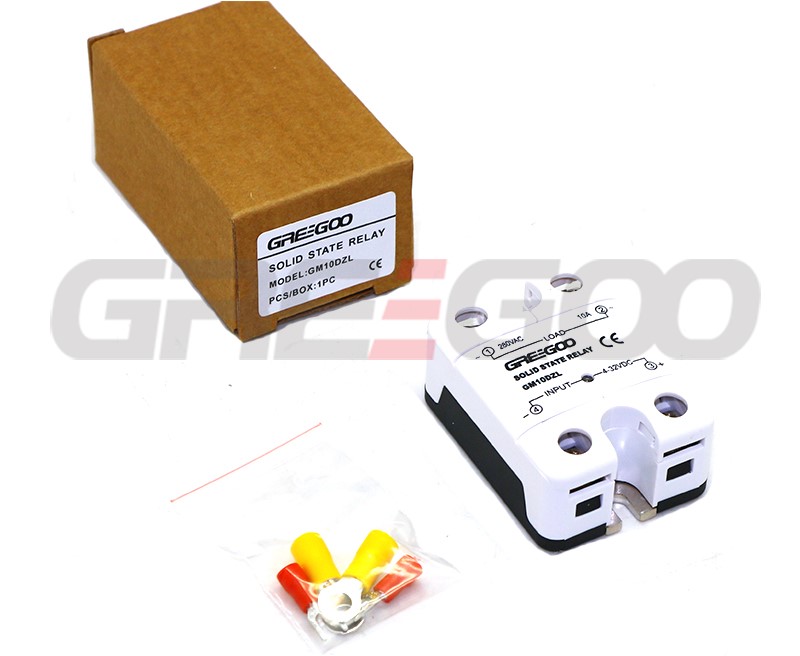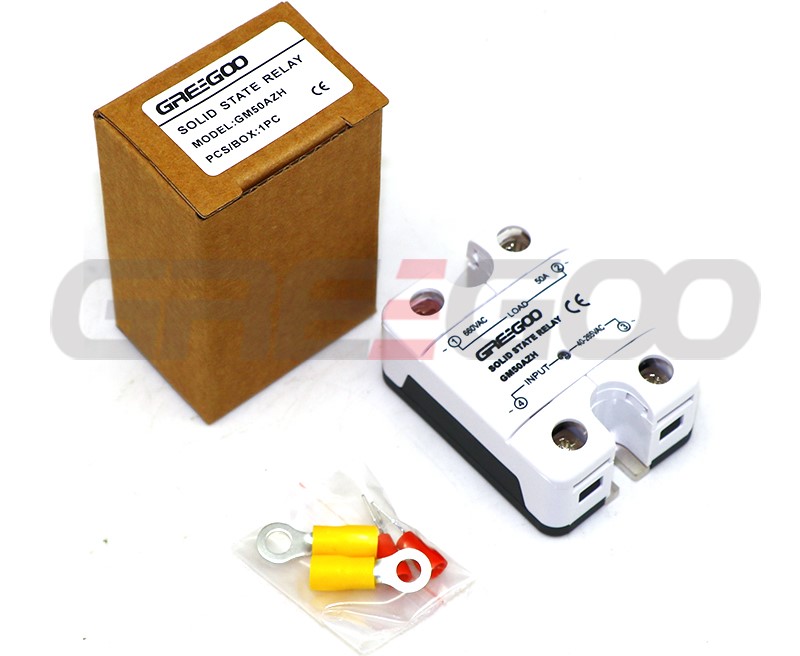IP20 Solid State Relays (Crouzet type)
Home Products Solid State Relays (AC Switching)Single Phase Solid State RelaysIP20 Solid State Relays (Crouzet type)
IP20 Solid State Relays (Crouzet type)
EM Series panel mount single phase AC output Solid State Relays are designed to be used in almost any application, offering very long life expectancy and are easy to install, easy to use, robust and multipurpose.
››Output current of 10, 25, 50, 75, 100 and 125 Amps
››Output voltage 24-480 Vac
››Control voltage of 4-32 Vdc, 18-36 Vac/dc, 40-265 Vac and 90-260 Vac
››Zero cross or instantaneous (resistive or inductive loads)
››Integrated IP20 touch-safe removable covers
››Built-in overvoltage protection (only Zero Cross)
››LED input status indicator
Part numbers
| Model No. | Output Current | Output Voltage | Input Voltage | Switching | Output protection |
| EM10DZL | 10A | 24-480VAC | 4-32 VDC | Zero Cross | TVS |
| EM10CZL | 10A | 24-480VAC | 18-36V AC/DC | ||
| EM10AZL | 10A | 24-480VAC | 40-265 VAC | ||
| EM25DZL | 25A | 24-480VAC | 4-32 VDC | ||
| EM25CZL | 25A | 24-480VAC | 18-36V AC/DC | ||
| EM25AZL | 25A | 24-480VAC | 40-265 VAC | ||
| EM40DZL | 40A | 24-480VAC | 4-32 VDC | ||
| EM40CZL | 40A | 24-480VAC | 18-36V AC/DC | ||
| EM40AZL | 40A | 24-480VAC | 40-265 VAC | ||
| EM60DZL | 60A | 24-480VAC | 4-32 VDC | ||
| EM60AZL | 60A | 24-480VAC | 40-265 VAC | ||
| EM80DZL | 80A | 24-480VAC | 4-32 VDC | ||
| EM80AZL | 80A | 24-480VAC | 40-265 VAC | ||
| EM100DZL | 100A | 24-480VAC | 4-32 VDC | ||
| EM100AZL | 100A | 24-480VAC | 40-265 VAC | ||
| EM120DZL | 120A | 24-480VAC | 4-32 VDC | ||
| EM120AZL | 120A | 24-480VAC | 40-265 VAC | ||
| EM25DRL | 25A | 24-480VAC | 4-32 VDC | Random | RC Snubber |
| EM25ARL | 25A | 24-480VAC | 90-260 VAC | ||
| EM40DRL | 40A | 24-480VAC | 4-32 VDC | ||
| EM40ARL | 40A | 24-480VAC | 90-260 VAC | ||
| EM60DRL | 60A | 24-480VAC | 4-32 VDC | ||
| EM60ARL | 60A | 24-480VAC | 90-260 VAC | ||
| EM80DRL | 80A | 24-480VAC | 4-32 VDC | ||
| EM80ARL | 80A | 24-480VAC | 90-260 VAC | ||
| EM100DRL | 100A | 24-480VAC | 4-32 VDC | ||
| EM100ARL | 100A | 24-480VAC | 90-260 VAC | ||
| EM120DRL | 120A | 24-480VAC | 4-32 VDC | ||
| EM120ARL | 120A | 24-480VAC | 90-260 VAC |
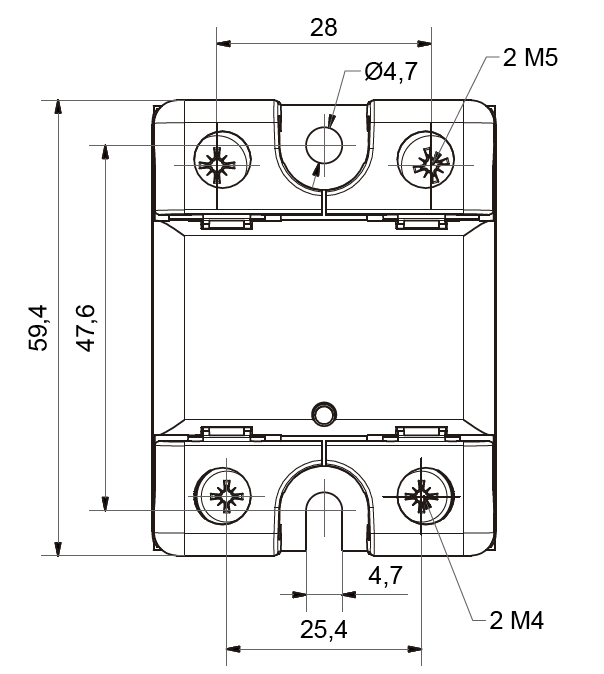
A margin should be left when selecting the voltage and current of the solid state relay. For resistive load: the current is selected according to 2.5~4 times the load current, and the voltage is selected according to 2~2.5 times the load power. Inductive load: current is selected according to 3-7 times load current, voltage is selected according to 2.5-3 times load voltage.
The main differences between a Silicon Controlled Rectifier (SCR) module and a Solid State Relay (SSR) lie in their functions and composition. An SCR can regulate current by controlling the conduction angle, while an SSR primarily acts as a switch and cannot regulate current. A Solid State Relay consists of an SCR and a synchronous trigger drive, with an integrated isolation trigger terminal, whereas an SCR requires external isolation. Although they may have similar functions in some applications, they differ significantly in regulation capability and internal structure.
Thyristor modules require a dedicated trigger circuit to provide precise trigger pulses, suitable for applications needing precise control. Solid-state relays are triggered via optocouplers, featuring built-in electrical isolation, and are easy to install, making them suitable for applications with lower switching frequencies. The anti-interference capability of thyristor modules depends on the design of the trigger circuit, while solid-state relays have relatively strong anti-interference due to optocoupler isolation, though electromagnetic interference should still be considered.
Need more information?
Contact us to request pricing, availability and customization options.

Solid state relay with heatsink integrated
17.5mm solid state contactor, integrated heatsink with din rail clamps, 15A, 25A, 40A and 60A.
View More
Compact FASTON terminals ac switching solid state relay
1-Phase, 15A and 25A, 230VAC, FASTON terminals connect
View More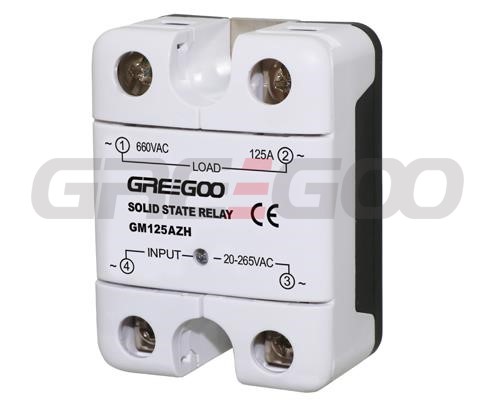
Integrated IP20 touch-safe removable covers Solid State Relays
660VAC
View More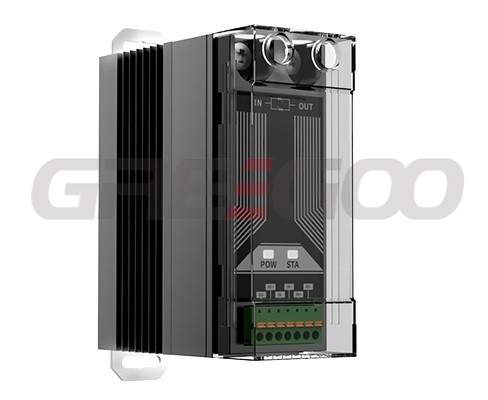
Solid state relay with diagnostic
Status output built in solid state relay
View More












